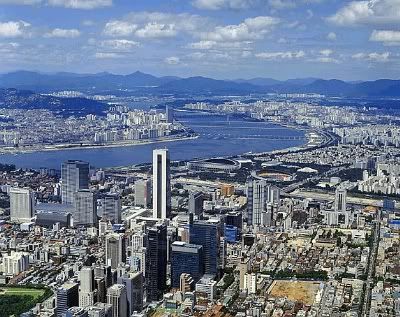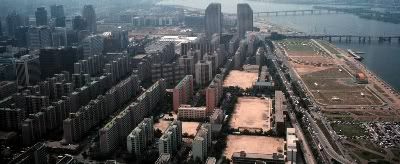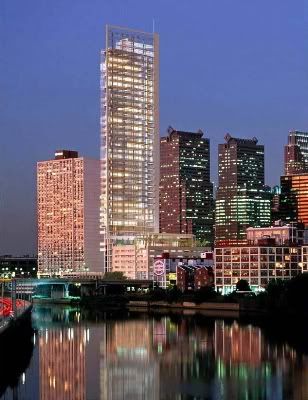Queensbury

| |
|---|---|
| Motto Queensbury, a City of Synthesis and Genesis | |
| Population | 28,762,531 |
| Area | 1,507 km² |
| Population Density | 19,086 people/km² |
| District(s) | Historic Port of Queensbury |
| County | Queensland |
| Province | Artega |
| Country | United Kingdom |
| Post Town | Queensbury |
| Postal Code | QU, QT, QA, QP |
| Parliament District | Historic Port of Queensbury |
Queensbury is a city of the United Kingdom located at the mouth of the River Tenka. With a 2005 estimated population of 28,762,531 Queensbury functions as one of the larger commercial centres in the UK and although far behind cities such as Philadelphia and Breningrad in terms of international importance, Queensbury’s location on the Azazian Sea makes it important regional centre for trade and commerce.
Contents
History
 Immigrant Housing in New Hope |
|---|
Founded in 1842 by James Rowan, the city was named after the reigning British monarch at the time, Queen Victoria. Despite a lack of a prior native settlement at the site, Queensbury sat amongst a large native population and unlike other major cities such as Imperium, Breningrad, and Philadelphia the Queensbury settlers and government made an active attempt to peacefully co-exist with their neighbours.
As such the city developed into a trading hub for both the English settlements and Azazian villages scattered amongst New Australia, Arista, and New Britain as the Azazian Sea offered a much calmer route of passage than the oceanic coasts of the same islands. This growing economic importance found added to it the development of industry along the riverbank as industry could use the city as a regional distribution hub.
By 1890 the city boasted over one million people and suffered from high rates of rural-urban migration that would later see the population rise by millions of people in rather short time periods. To combat this rapid growth the city made a decision to invest in its infrastructure as well as its public areas to ensure the picturesque city continued to be so as well as continuing to be a focus for growth.
Owing to the peace and prosperity Queensbury had seen since its founding the city was one of the few major population areas to vote against independence from Great Britain. However, statements made by the colonial government made clear that any part of the Azazian Archipelago that did not join the new country would be made to suffer economically and potentially militarily. Lord Mayor Anthony Cartwright, although incensed, recognised the importance of the city as a trading centre for the new country and over-ruled his constituents and Queensbury and her environs joined the Commonwealth of Azazia.
During the world wars of the early to mid twentieth century, Queensbury continued to serve as a port for the distribution of goods manufactured in New Australia and it was during this period that such a role for Queensbury was cemented as the government invested in straightening and deepening what was once a river delta into a deep navigable passage that worked its way into the heart of the city.
By the latter portions of the 20th century, with a role of national trading centre, came the influx of poor, disadvantaged migrants – often of non-English descent. With these immigrants the city faced a reduction in what had once been a park city as the new arrivals could not afford the massive rents and land values created by the Queensbury real estate market. Yet with these immigrants came many different cultures, predominantly Russian, Spanish, and Azazian.
This influx of cultures, unlike the immigrants themselves, has been welcomed by the city as it has blossomed into a cultural capital of the UK. Yet the city continues to settle immigrants in high-density apartments, often far removed from the central residential cores and far removed from the more important commercial cores and tourist areas. This continues to be a source of heated debate within the UK as it seeks to cope justly with rising numbers of immigrants.
Geography
The heart of Queensbury rests thirteen kilometers upriver from the Port of Queensbury, owing to the original flow of the River Tenka, a broad river that emptied into a delta. The city rests at the transition from plains to foothills as the altitude rises headed south and east towards the mountains of New Australia, also the source of the river. In recent decades, however, the government at both national and local levels have rebuilt the mouth of the river into a deep navigable channel that allowed for the construction of an ocean port, along with considerable development of port facilities up 25 kilometers of the river.
Climatically, the city enjoys a largely subtropical climate with rainfall received more steadily throughout the year, though in smaller showers than larger rainfalls. This it owes to its position at the edge of the Azazian Sea, which acts as a micro-ocean for the purpose of climate generation, ie its own cycle of evaporation and precipitation.
Demographics
Owing to the large influx of natives since the earlier settlement times and given the recent trend towards a diversifying immigrant base, the city of Queensbury has grown to be a city of a more cosmopolitan culture, evoking the best of English, Azazian, Russian, and Spanish cultures and merging them into something truly unique.
Economy
 The new Synergy Tower, being built by New Synergy Ltd., one of Queensbury's leading graphic design firms |
|---|
While not on the scale or international importance of Philadelphia, Breningrad, Portsmouth, or Artega the port of Queensbury is important in that it allows for the aforementioned cities to specialize in heavy, ultra-large ships better used in international trade while Queensbury can focus on small to mid-size freighters, containers, and oil tankers that are of more use in the shallows of the Azazian Sea and the numerous rivers and inlets that provide access to most of the UK’s population.
In recent years the UK has begun to suffer from the withering of its secondary industry but in Queensbury this trend has been mitigated by the influx of a labour source with no appreciable skills and demanding little wages. And so while cities such as Breningrad and Portsmouth have begun to suffer from industrial stagnation the city of Queensbury has begun to see its industrial sector boom from a mixture of both high-tech automated factories to labour-intensive and low-skill industries. The advantage of Queensbury being its availability as a port to ship these goods throughout the UK market, or even to some smaller international markets which can’t handle the ultra-large freighters of the UK’s major port cities.
Additionally, the city boasts a number of successful quaternary industries especially in the field of the creative industries. Many of the UK’s leading architectural, design, music and film, and publishing companies have located their main offices and/or production facilities in the city.
Because of this growth the city of Queensbury is leading the UK in the development of its knowledge economy and as such the city is witnessing a rise in the median income level to what analysts predict will be near $62,000 USD for the coming year of 2006. A large part of this continuing growth is that its lack of international trade deemed it less valuable of a target for Novikovian forces during the Novikovian War and the city saw almost none of its infrastructure or large projects destroyed, unlike several other major UK cities.
| Cities in the United Kingdom and Oceanic Empire |
|---|
| Global Cities Imperium | Philadelphia |
| National Cities Poldi'sk | Port Hamptonshire | Queensbury |
| Regional Cities Charlotte | Churchill | Invercardon | Kingston | Salisbury | Zvolen |
